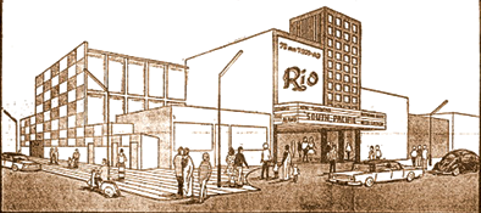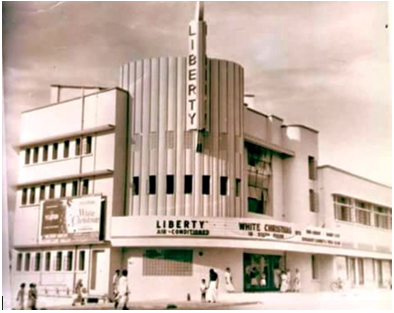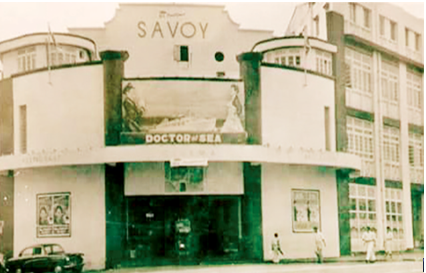Can you remember the Bioscope days? – By Tilak S. Fernando
Ceylon Today Daily-Columns- September 13, 2022
 I received this information on the metamorphosis of ‘Colombo cinemas’ sent by a friend based in London. It was a text by a historian, Asiff Hussein. Hussein gives a historical account going back to the ‘tent’ days when the ‘silent’ English movies were shown. He deals with the history of the Colombo cinema, its evolution, and the development of cinema halls in Colombo, Sri Lanka.
I received this information on the metamorphosis of ‘Colombo cinemas’ sent by a friend based in London. It was a text by a historian, Asiff Hussein. Hussein gives a historical account going back to the ‘tent’ days when the ‘silent’ English movies were shown. He deals with the history of the Colombo cinema, its evolution, and the development of cinema halls in Colombo, Sri Lanka.
According to Asiff Hussein, an Englishman named Warwick Major was the first person to show silent English films in a ‘tent’ at the site of the old Regal theatre grounds. In the early1900s, the movies were called bioscopes. The American Consul for Ceylon, Stillman Eells, wrote to American Motion Pictures in 1931 explaining how a touring ‘Electric Bioscope’ was screened. Those films were shown in various venues in town halls at regular intervals, with an average number of four hundred spectators. The older folks, Asiff Hussein, says revealed a man nicknamed the ‘Bioscope Man’ used to push his cart to various venues to show silent movies like in a cinema.
Bioscope Man
This ‘Bioscope man’ was a Muslim guy who used to push his handcart along the roads of Slave Island in the 1950s and 1960s. He managed to gather a few cinemagoers and rolled the films with a handle, aided by light to magnify images. The films were protected by a black box. During this era, cinema was made up of monochrome silent films, and the ‘bioscope man’ used to give a running commentary of the movies in Tamil so that the majority of Muslims in Slave Island could understand the description uttered by the bioscope man on films.
Modern cinema came into existence during World War I and II. In 1931, The American Consul wrote to American motion pictures about the three ‘picture halls’ or ‘theatres’ in Ceylon, namely the Empire, Regal and Majestic in Colombo. The Empire and Regal were equipped with fading lights and exhaust fans. Gramophone records were played half an hour before the opening of the show at each terminal. Newsreels or comedy films were synchronised, and movies shown in all three halls were changed fortnightly.
All films at the three film halls screened American films while British and German productions were in the mixture. Hussein’s remarks about the popularity of films with dialogues that were ‘pretty popular’ in Ceylon among the cinemagoers, even though many did not understand English. Every sophisticated cinema hall in Ceylon performed two shows fortnightly: one at 6 p.m. and the other at 9:30 p.m. At the 6 p.m. performances, the cheaper class of seats were permanently occupied, although many did not understand English. The English-speaking Ceylonese and the Europeans had almost forgotten silent films when films with dialogues were replaced. When movies were synchronised, adverse comments were heard from the audience. Therefore, it seemed that those films that contained discussions became extremely popular in Ceylon.
Then came the revolution of air-conditioning of cinema halls, which was considered a very comfortable experience. The Rio cinema at Slave Island became the most family-friendly cinema hall during that period. The impact on the nation island in July 1983 riots; the nation became a victim of the torching of properties and racial riots. Many Tamils became victims of the riots and opened the door for refugees to other countries, especially the West. By the time the riots subsided, the quality of the films miserably faded. The July incident became ‘the Black July’ internationally.
Rio Cinema

The Rio (Kumaran Ratnam Road), Slave Island came much later, in 1965. It was set up by Appa Wellai Navaratnam. In the olden days, it had an open area opposite the cinema, which served as a parking lot for cinema patrons. The section between it and the roadway was adorned with cut-outs of the film running at the time. The early films shown at Rio were mainly Twentieth Century productions and musicals such as South Pacific, Sound of Music, Can Can and West Side Story; All films like Alamo and humorous adventure films like Those Magnificent Men in their Flying Machines.
After the riots, the Rio Cinema at ‘Slave Island, Colombo 2, came up with an impressive fascia with ‘neon’ lights at night with red lighting running through the name of the cinema as Rio Cinema, and blue lighting throughout the side of the building, which gave it a sophisticated appearance. Before the July riots, the cinema hall exterior had been covered with ‘Gintota Plywood and Satin and ‘kirihambiliya facing. Cinema seats were equipped comfortably and upholstered with foam rubber in creamy beige rexine (a kind of artificial leather used in upholstery) and satinwood arms to afford an unobstructed view of the main screen, which was over forty feet wide and nearly forty feet high.
Rio’s generous lounge was open to cinemagoers with snacks, including Chinese Rolls, Patties, Sandwiches and Hamburgers from the Nippon Hotel across the road. The ‘Sweet Bar’ comprised amply stocked with Icy Chocs, Soft Drinks, Cashew nuts and Peanuts
A few of the old cinemas had usherettes. For example, Rio had in their early year’s usherettes dressed in grey and with ‘Air Force’ caps with a white stripe running through a whitish and bluish grey jacket and a skirt. Usherettes were mainly from the Burgher community. They carried trays strapped to their shoulders to sell refreshments such as icy chocks, patties, sandwiches and hamburgers. It was the same with the Savoy cinema. The Savoy, too, had in the 1960s‘Burgher women’ usherettes. They wore white frocks and red and white dotted cravats and carried torches to show people their appropriate seats. During the intervals, they would make another appearance, carrying trays filled with sweets and ice chocs for sale.
Other cinema theatres in Colombo
The Regal at Parsons Road (Sir Chittampalam Gardiner Mawatha) was set up in 1930 by Ceylon Theatres Company. It accommodated nine hundred seats equipped by an American company. At that time, it was one of only three good theatres in Colombo, the other two being the Empire and the Majestic.
The Majestic Cinema at Galle Road Bambalapitiya was initially established by the Parsi-owned Madan Theatres during the world war years. It was later purchased by Ceylon Theatres, owned by Chittampalam Gardiner. It was known as the ‘Majestic Talkies,’ but it was akin to the Savoy cinema.
In the 1930s, great American movies were shown – Metro Goldwyn Mayer films like Scapegoat, Green Helmet, and Tarzan, the Ape-man. The ‘Secret of Monte Cristo’ also attracted large crowds. In the 1980s, the old cinema was demolished by its owners and replaced by Majestic City, the commercial mall.
Liberty Cinema

The Liberty Cinema at Turret Road, Colpetty (Dharmapala Mawatha), was built by Jabir A. Cader in the 1950s. It screened films by both Paramount Pictures and Universal Pictures. One of the first films shown at the Liberty cinema was ‘A White Christmas’. Later it released comedies starring Gerry Lewis and Dean Martin, Danny Kaye’s Knock-on Wood; musicals like Cliff Richard’s Summer Holiday and My Fair Lady, along with thrillers like Towering Inferno and Cassandra Crossing; Horrors like Alfred Hitchcock’s Vertigo and Psycho and Robert Aldrich’s Whatever Happened to Baby Jane.
Savoy Cinema

The Savoy Cinema at Galle Road, Wellawatte, was also built in the fifties. It may have chosen its name from the more famous Savoy theatre in London. It was owned by a person named CV De Silva, who is believed to have started life providing entertainment for overseas troops stationed during World War II. and built by Jason Fernando. In the late fifties, there was a ‘hullabaloo’(1956) when the musical Rock Around the Clock featured Bill Haley and the Comets. A few Burgher youths created a fury, and they started dancing inside the cinema and behaved boisterously, which became a nuisance. The Police had to be summoned to bring the situation under control.
Popular Cinema
Many famous films in the 1960s were Gun Fever, Lady Chatterley’s Lover and The Case Against Brooklyn, James Bond Movies Dr No, From Russia with Love, Goldfinger and Thunder Ball.
In the 1960s, cinema tickets cost from fifty cents to three-Rupees, maximum. The ‘Gallery’ usually cost fifty cents, Second Class, one rupee, First Class, two rupees and the Balcony three rupees.
tilakfernando@gamail.com







